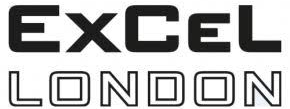How is the Hospitality Industry adapting post Lockdown?
As the lockdown restrictions begin to ease somewhat, businesses especially restaurants, cafés and coffee shops are thinking about how they will protect their customers and staff. Creating a safer and more contactless environment ironically goes against the very nature of hospitality but from enclosed dining pods to temperature checks to robot waiters, we have already seen diverse ideas for maintaining safety in restaurants. But how can new ordering and payment technologies help to make the transition easier?
Contactless Payments
Another way of reducing contact from server to customer is the use of disposable or online menus. As well as reducing the risk of contamination, it again allows customers to order directly from the table or from a self-service kiosk or even from home, offering the added benefit of pre-booked and pre-paid meals. This ensures that maximum seating capacity is not breached and social distancing can still be put into practice as well as speeding up and improving accuracy of orders.
While contactless card payments as well as Google and Apple Pay are already well established in many regions, it’s doubtless contactless payments will become even more widespread. Certainly customers and staff are not so eager now to handle cash and contactless is the safest way to accept payments. Although in many regions we have seen the limit for contactless payments raised, this may still prove a problem when dining out. Options such as online payment or even QR code payment are useful additions. Customers can scan a digital QR code or a printed QR code on the bottom of their bill and pay directly via their phone.
Order at Table
The uptake of BYOD technology and ordering directly from table to kitchen is also becoming more common place post lockdown, with venues and apps such as QikServe’s Preoday online, mobile ordering and pre-payment technology enabling customers to use their own device or a tablet situated at the table to place an order directly with the kitchen. For this, web and cloud enabled kitchen printers, capable of reliably accepting and queuing orders from multiple devices become essential. Technology such as Star’s CloudPRNT™ provides benefits by eliminating the need for an additional tablet to input the order or to send a received online order to the printer. Instead, the ordering service can communicate directly with the printer for both table ordering as well as taking online takeaway or collection orders from the restaurant web site albeit remotely or from a touchless kiosk.
Online Menus
Another way of reducing contact from server to customer is the use of disposable or online menus. As well as reducing the risk of contamination, it again allows customers to order directly from the table or from a self-service kiosk or even from home, offering the added benefit of pre-booked and pre-paid meals. This ensures that maximum seating capacity is not breached and social distancing can still be put into practice as well as speeding up and improving accuracy of orders.
Omni-channel
A recent YouGov poll showed that 57% of UK customers would currently still be hesitant to return to restaurants. With this in mind, delivery and collection continue to be attractive options. An increasing number of restaurants have diversified to a delivery and / or collection model so that customers can still support their local businesses whilst enjoying their favourite meals. Many POS software suppliers are now offering reduced or no monthly fees or setup costs, such as Nobly Delivery by Nobly Pos, Goodeats by Goodtill, Quickorder’s free takeaway app and StoreKit’s free online ordering app SK Takeaway.
Others are enabling restaurants to quickly set up online with MoboInnovations offering the online ordering platform Mobo2Go which can be easily integrated with existing websites and apps. KuulEats Limited (by Newtryx) has launched an online platform for hospitality and retail with zero monthly commission/fees, which ensures social distancing is complied with.
Some delivery services, such as Uber Eats, have eliminated delivery and activation fees for restaurants for an introductory period. With an increasing proportion of the population now regularly experiencing the convenience of ordering online and with continued uncertainty of further lockdowns, successful restaurants will be the ones offering a variety of dining experiences.
Get in touch!
If your business is thinking about implementing any of these changes, why not get in touch with Star to see how we can help you. With over 30 years’ experience in providing reliable restaurant, mobile and kiosk hardware solutions to the hospitality industry and working together with leading hospitality software providers, we can offer expert advice and assist you with your business needs.








